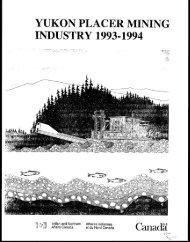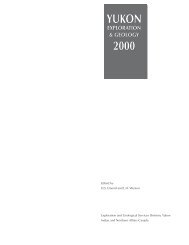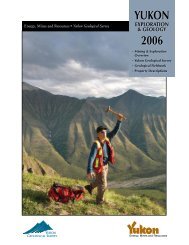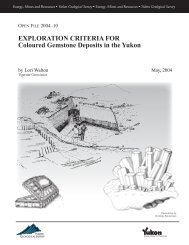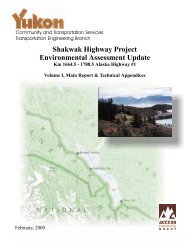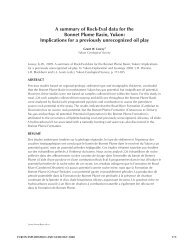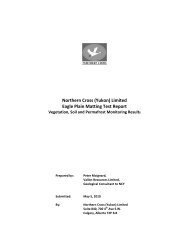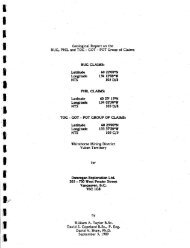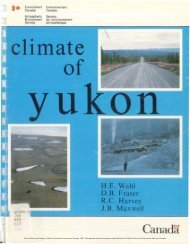WhiteCAP_Plan_01SEPT..
WhiteCAP_Plan_01SEPT..
WhiteCAP_Plan_01SEPT..
Create successful ePaper yourself
Turn your PDF publications into a flip-book with our unique Google optimized e-Paper software.
Northern Climate ExChange <strong>WhiteCAP</strong> Draft <strong>Plan</strong><br />
2.0 Whitehorse Adaptation <strong>Plan</strong>ning Process<br />
The Whitehorse adaptation planning process was created to manage the complexity<br />
associated with regional climate change. The process was inspired by the Risk-<br />
Constrained Organization approach to strategic management described by Masch<br />
(2004) to achieve a “natural” approach to decision-making. The natural approach<br />
“…does not rely on any unwarranted assumptions and incorporates ‘multiple everything’<br />
– strategies, scenarios, and different risk types” (Masch, 2004: 435).<br />
The natural approach was used primarily to manage the uncertainty and variability<br />
associated with climate change impacts in northern regions. All climate has variability,<br />
and projecting future climate always contains uncertainty. For example there is some<br />
uncertainty in forecasting future global climate. Downscaling from global to regional<br />
climate adds more uncertainty 3 . Using this regional climate to assess the biophysical and<br />
socioeconomic implications of climate change introduces even more uncertainty.<br />
Fortunately we have ways to address this uncertainty within the planning process. In the<br />
case of the <strong>WhiteCAP</strong> plan, uncertainty was addressed using a combination of scenario<br />
planning and risk management. Scenario planning allows for a range of likely outcomes<br />
of future actions to be determined. While it is difficult to say what the climate will be<br />
precisely, we have reasonable confidence that it will fall within the range of scenarios.<br />
Risk management is a technique that allows us to make informed decisions in the face<br />
of uncertainty.<br />
2.1 Community Engagement<br />
The community of Whitehorse was actively<br />
engaged throughout the adaptation planning<br />
process, from June 2009 to September 2010<br />
(anticipated). Community engagement<br />
occurred at several levels including<br />
Whitehorse Local Advisory Committee<br />
meetings, open houses, newsletters, technical<br />
working sessions, presentations to project<br />
partners 4 and workshops with broad<br />
community input.<br />
The Whitehorse Local Advisory Committee<br />
was organized and led by the Whitehorse<br />
Adaptation Coordinator and provided<br />
extensive guidance on the development of the<br />
adaptation plan at all stages of its<br />
development. The advisory committee<br />
included representatives of Ta’an Kwäch’än<br />
Council, Kwanlin Dün First Nation<br />
Government, Yukon Government, City of<br />
Whitehorse and the Yukon Conservation<br />
Society. The committee primarily ensured<br />
Figure 2.1:<br />
Whitehorse Adaptation<br />
<strong>Plan</strong>ning Process<br />
5



